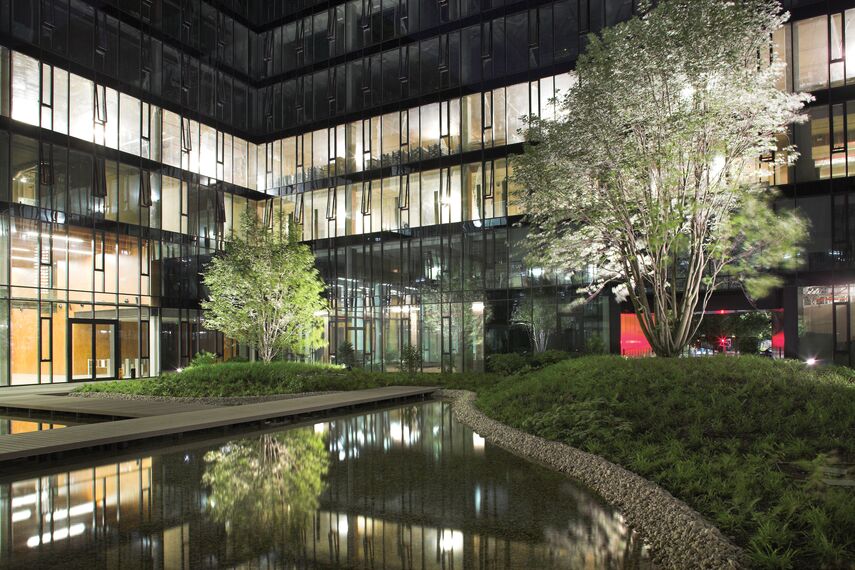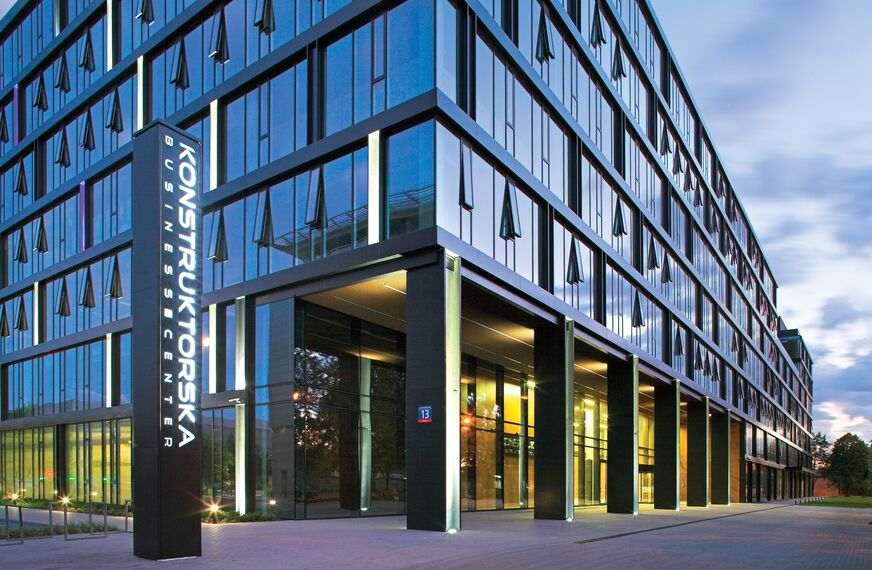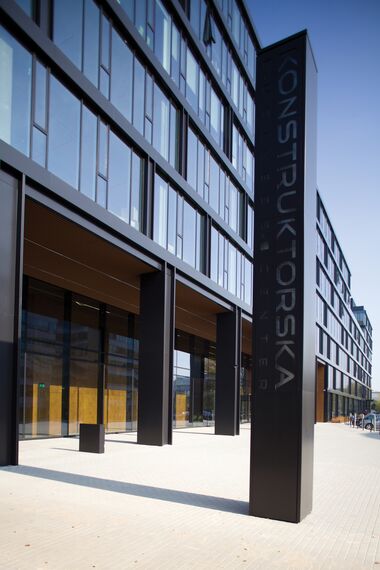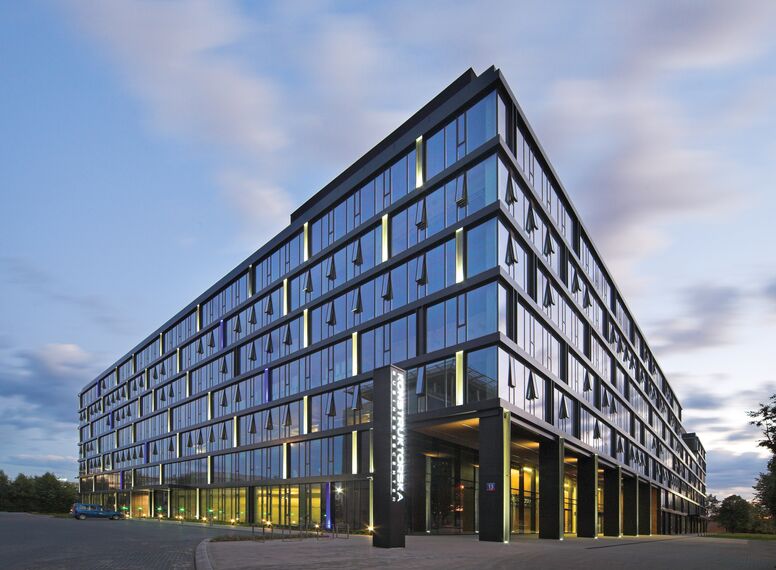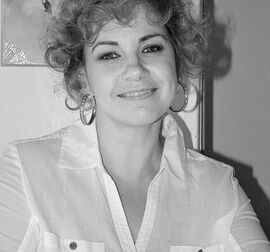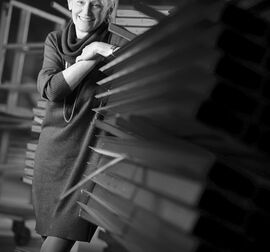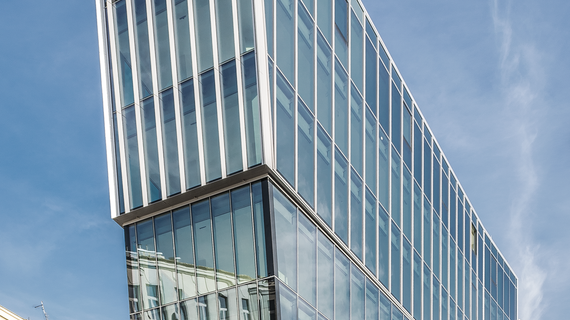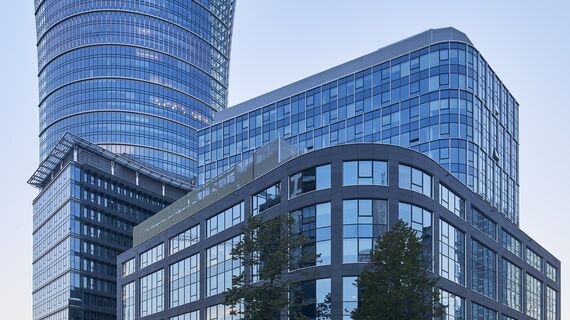- Emkaa Architects
- Epstein
Konstruktorska Business Centre
ELEGANCE MEETS COMFORT
The Konstruktorska Business Centre (KBC) is one of many office buildings that have recently been erected in the southern part of Warsaw, in a corporate district located between the city centre and the airport. With its design and spatial quality, the KBC certainly stands out from the other neighbouring structures. Designed as a purely commercial volume, it reflects the overall business vision established over the years by its investor, Slovakian firm HB Reavis.
This company, founded in the early 1990’s, went international a few years ago, transferring the quality of buildings previously constructed in Slovakia and the Czech Republic to other countries. As HB Reavis’s technical building specialist Milena Mrázková explains, “the firm’s policy for every investment is to implement a number of general principles based on past experiences, adjust them to local standards, and ultimately end up with an elegant building that is different from previous ones.”
The Konstruktorska Business Centre, the first building by HB Reavis in Poland is simple and efficient. It is based on an octagonal floor plan, connected vertically by means of four communication shafts, offering space for let for both large-scale tenants requiring a whole floor and small enterprises requiring only a modest office. With its 48,000 square metres of offices for lease, it has the largest floor plan in Poland. As is the case in many office buildings built by the company in the past, the KBC has high-ceilinged lobby areas, extending upwards over two storeys, finished with natural materials. Situated on opposite corners of the floor plan, they open out onto large patios through glass covering their full height, providing a sense of prestige.
The patios are certainly the most intriguing part of the volume. Carefully designed, complemented by a number of tall trees, other foliage, and water features, they filter natural light into the interior spaces. They therefore offer views of natural features that are relatively uncommon in commercial structures. Preserving the building’s open character for its tenants, and connected at ground level into a single, unified space, the patios offer a place for relaxation and integration. They are also a clear sign of HB Reavis’s interest in ecology and sustainability.
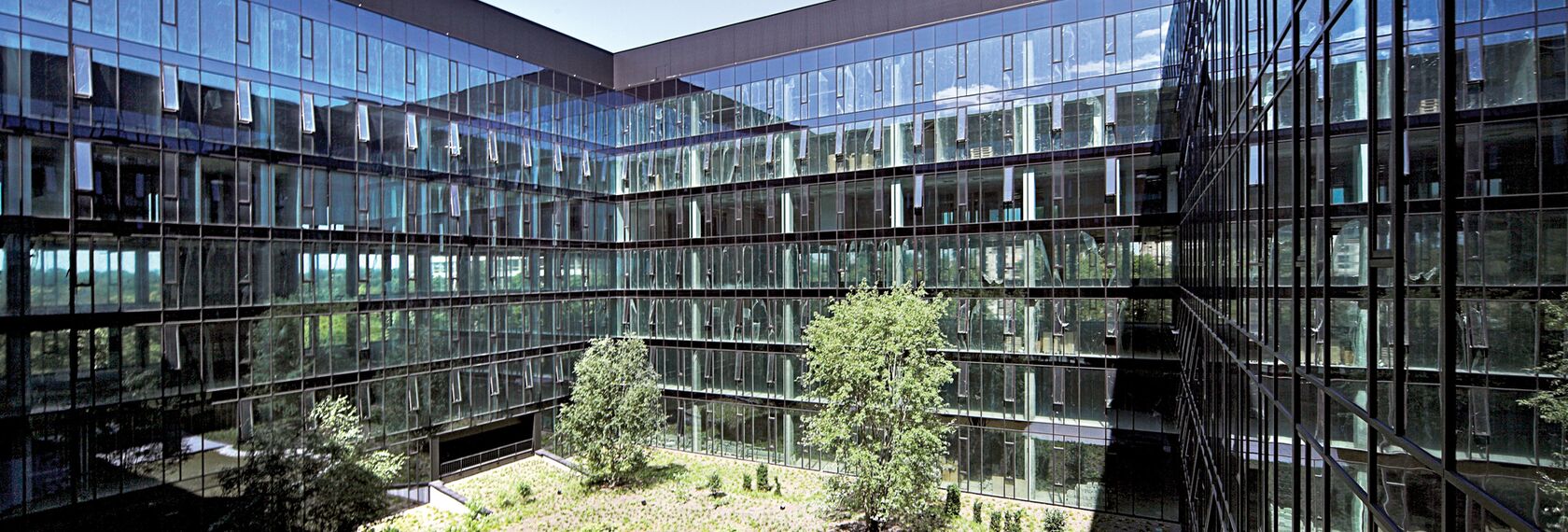
The carefully designed patios are certainly the most intriguing part of the volume
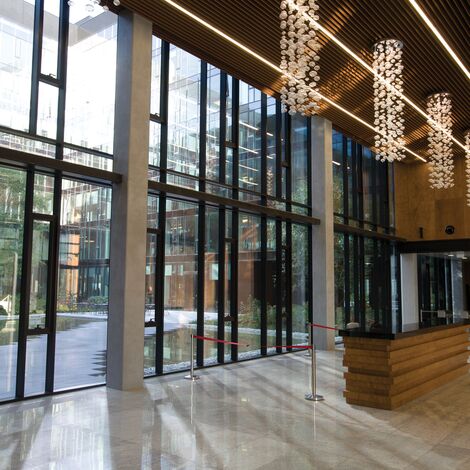
High-ceilinged lobby areas are finished with natural materials
Comfort for the people inside
“We never do standard window elevations”, says Milena Mrázková. “We always go for a floor-to-ceiling high façade that gives the tenants the best connection with the outside world. The comfort of the people working inside the building is always the most important thing for us.” In the case of the KBC, the word ‘comfort’ has multiple meanings. Although the building holds a BREEA M certificate with the rating Very Good ,’ the word ‘comfort’ means more than just the technical parameters that had to be met in various aspects of the design. It also relates to the quality of the internal space, its close connection with the outside space, the largest possible amount of daylight coming into the offices, and lots of windows letting fresh air inside.
One crucial factor here of course was the design of the elevations. The central principle of HB Reavis’s investments is very sim-ple: it is architecture that sells the building, and it is its elevations that are visible at first sight. The future appearance of the KBC was therefore tested in countless computer renderings, first analysing the overall graphics of the façades and then their details such as the proportions of glass panels and the colours of aluminium elements. Of course, the elevations were also developed from technical and ecological points of view, in terms of thermal and acoustic insulation, sun exposure, and reflection parameters along with ventilation, air-conditioning, and heating use inside.
The result is a quiet and repetitive façade with dominant horizontal bands indicating the floors. The fabricators of the façade were Defor S.A. and Warsaw-based company Mega Aluminium, already highly experienced with Reynaers products before construction work began on the KBC. “The final approval of the façade was confirmed by means of a large mock-up”, says Agnieszka Wojsa-Cosentino, co-owner of Mega Aluminium, “which is always better than basing a decision on the typically small samples of aluminium mullions and glass panels.” The façade system used in the KBC’s project is a graphite coloured stick façade CW 50-HI. A custom made mullion transom connection was created for the staggered mullions. Narrow vertical top-hung windows are placed in every potential office. The spandrel areas are finished with aluminium sheets, mounted without visible screws. This solution was tested for impact resistance at the Reynaers test centre in Poland.
One of the most difficult issues on this project was to create as much as possible narrow dilatation connections of the aluminium construction in line with the building dilatation. For the two entrance lobbies the structural glazed façade CW 65-SC was installed due to the great height of the glass partitions. Reynaers created a bespoke solution where the 65 mm mullions were fixed to a steel substructure. Special attention was also devoted to the selection of glass. “For us it was important to meet both technical and aesthetic requirements”, Wojsa-Cosentino explains. “We therefore used technical enhancements such as a SunGuard glass coating to prevent the interior space from becoming too warm, as well as eight millimetre thick tempered glass outside instead of the typical six millimetre thick glass. We did this in order to provide a flat reflective surface, adding value to the visual quality of the building.”
Of course, visual quality is very important in today’s world. Offering a combination of good design, qualitative materials, an architecture-oriented investor, and excellent execution, the Konstruktorska Business Centre is a building that balances eco-engineering driven by numbers, subtle elegance, and an efficient use of space. In other words, it is undoubtedly an excellent workplace.
It was important to meet both technical and aesthetic requirements
Milena Mrázková was born in 1970 in Levice, Slovakia. In 1994 she graduated in building structures from the Slovak Technical University in Bratislava. From 1994 till 2004 she worked for Reynaers Aluminium in Slovakia. Since 2007 Mrázková works at HB REAVIS as a senior technical specialist, specialized in landscape and façade design and the influences of the building envelope on the energy performance of the building. “Simplify to be understood”, is her slogan.
Agnieszka Wojsa-Cosentino was born in Warsaw in 1957. She graduated at the Academy of Fine Arts in Warsaw and got a master degree in Architecture, Warsaw University of Technology, at the University of Detroit (USA ), and the Universita’ di Napoli in Italy. After six years of building site and project management experience in Nigeria, the architect worked in three architectural design studios in Italy. In I994 she came back to Poland to establish façade fabricator Mega Aluminium and system distributor Metra Poland together with her husband Franco Cosentino. “We wanted to form a medium- sized company with very young people fresh from technical school.” In 2013 she won the ‘Puls Biznesu’ as 5th most enterprising female manager in Poland.
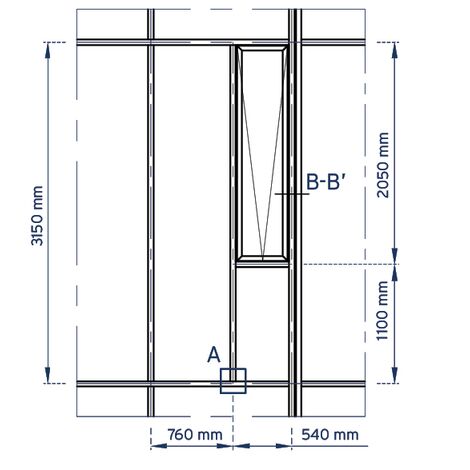
CW 50-HI section
Project solution
Systems: CW 50-HI, bespoke solution based on CW 50-HI, CW 65-SC bespoke solution, CW 50 top hung windows, CS 86-HI doors
Project description:
- 21.000 m² of façade
- Transom-mullion CW 50-HI with a special mullion to transom connection with effective water evacuation
- Opening elements:
- Narrow, vertical top-hung CW 50 windows placed in every office
- Special extended glazing beads to minimize the gap between the glazing bead and the face cap - Narrow dilatation connections of the aluminium construction in line with the building dilatation
- At the building dilatation two half mullion profiles are used to allow a building movement of 17 mm
- A wider external face cap is fixed on one of the halve mullion’s pressure plate - CW 65-SC structural glazed façade was installed at the entrance lobbies due to the great height of the glass partitions. A bespoke solution was developed where the 65 mm mullions are fixed to a steel substructure.
Elements:
- CW 50-HI: 20.200 m²
- CW 65-SC: 800 m²
- CW 50 top hung windows:
- 1520 elements
- 540 x 2050 mm
Glazing:
- CW 50-HI:
- Special SunGuard glazing
- Composition of glass: 8-16-55.2
- Max. glass dimensions 1350 x 3150 mm
- Max. weight of glass panel: 200 kg - CW 65-SC:
- Special SunGuard glazing
- Composition of glass: 10-16-66.2
- Max. glass dimensions on ground level: 2600 x 3862,5 mm
- Max. weight of glass panel on ground level : 570 kg
- Max. glass dimensions above ground level: 2600 x 2837,5 mm
- Max. weight of glass panel above ground level : 420 kg
Testing:
The CW 50-HI mullion transom solution was tested for impact resistance at the Reynaers test centre in Poland.
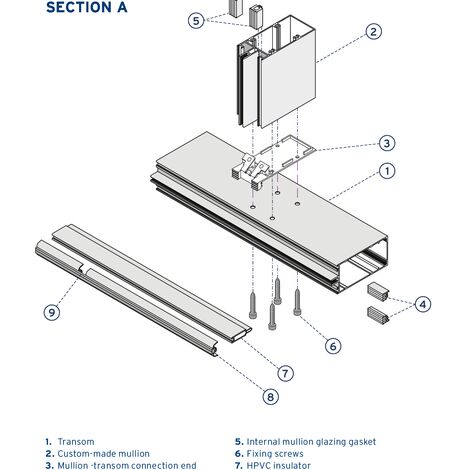
SECTION A: CW 50-HI, 3D model of transom mullion connection

SECTION B-B': CW 50-HI with top hung window, dilatation connection
Involved stakeholders
Architect
- Emkaa Architects
- Epstein
Photographer
- HB Reavis
- Pan Carter
- Piotr Kopyt
Other stakeholder
- HB Reavis Construction PL Sp. z o.o. (General contractors)
- HB Reavis Poland Sp. z o.o. (Investors)
- Roman Rutkowski (Authors)

